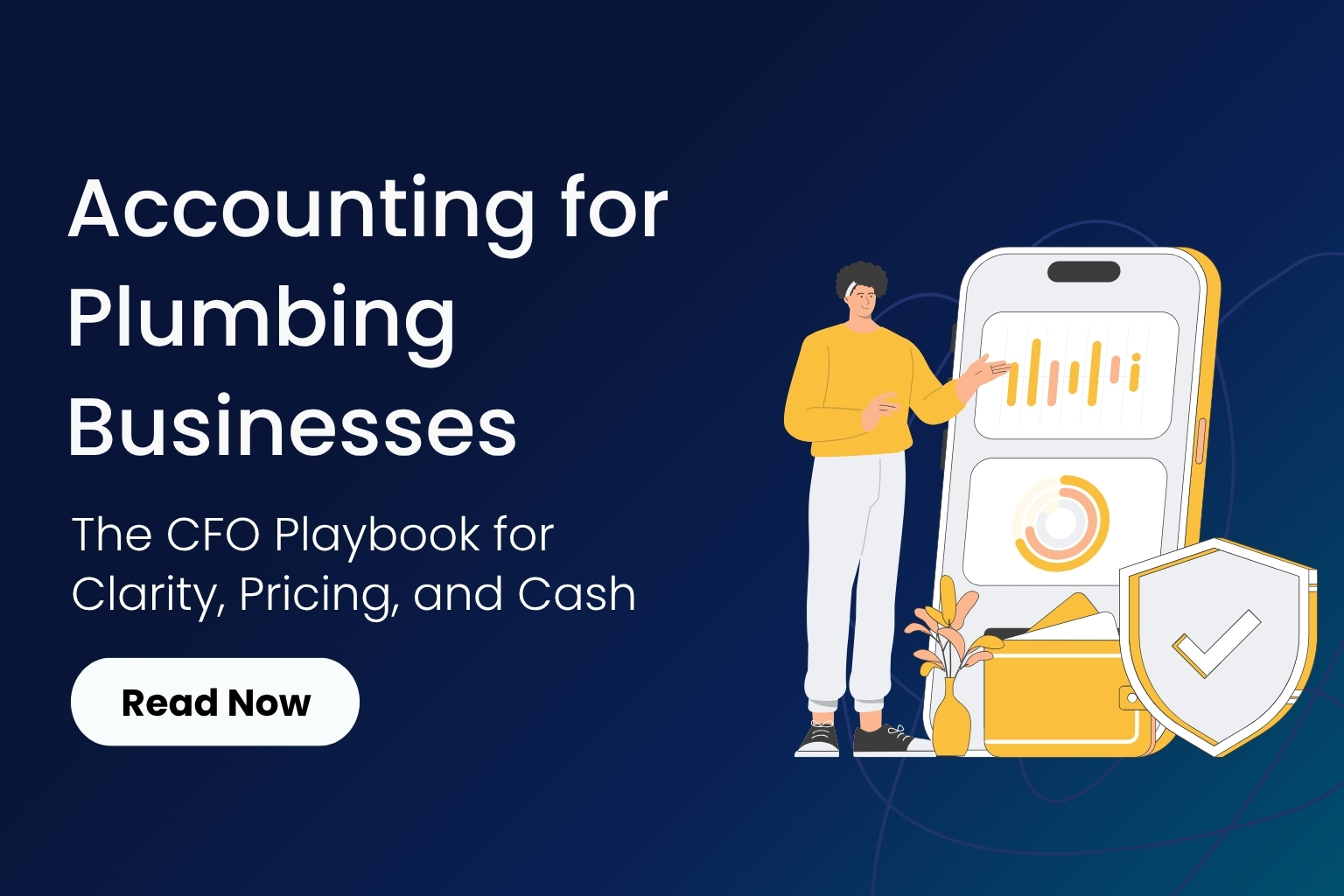
If you run a plumbing shop, you already manage phones, trucks, techs, quotes, and emergencies. The piece that quietly determines whether all of that turns into profit is your accounting system. Done right, accounting for plumbing businesses, it’s an operating system for pricing, scheduling, cash, and growth.
This playbook builds that system step by step, in the order that keeps data clean and decisions easy.
Daily break-even that actually guides the day.
Add up fixed monthly overhead (rent, admin wages, software, insurance, phones, vehicle payments, marketing retainers, debt service). Divide by 25 working days. That number is what the shop must produce today just to stand still. Miss it today? The shortfall rolls to tomorrow. It’s a simple way to keep pricing, scheduling, and urgency aligned with reality.
Price on fully burdened labor, not base wage.
A $30/hr tech rarely costs $30/hr. Build a burden rate that includes employer taxes, workers’ comp, health benefits, paid time off, training, uniforms, vehicle cost allocation (insurance, maintenance, tires, depreciation), plus field supervision share. If the true cost is $48–$52/hr and you price off $30/hr, margin leaks every time the truck rolls.
Why start here?
Because every decision downstream, quotes, premiums, hiring, even marketing ROI—depends on these two anchors. If they’re off, everything else is noisy.
Your chart of accounts should mirror the service lines in your CRM so estimate-vs-actual makes sense at a glance.
Revenue lines (examples):
COGS (only if it exists because the job happened):
Everything else, rent, office payroll, software, general insurance, lives in operating expenses. This split keeps gross margin honest and comparable by service line.
Value pricing for project work.
When you deliver a finished bathroom (and coordinate trades), you’re selling an outcome and time saved, not a parts list with a small markup. Price the project. Own the hassle; own the margin.
Protect emergency capacity.
Block limited same-day/next-day slots and price them at a premium (e.g., +20–40%). Distress customers pay for speed. Competitors often can’t. Your premium capacity should be deliberate, not accidental.
Speed and clarity win quotes.
Offer online intake (photos + preferred times), send options the same day for straightforward jobs, and track quote aging. Every missed quote is preventable if your system nudges follow-ups at 24/72 hours.
Profit is won or lost one ticket at a time. Lock in a same-day closeout:
This is the single habit that makes month-end fast and accurate. Skip it, and you’ll be rebuilding the month from memory.
Automation keeps numbers current and frees hours each week.
Accounts receivable.
Accounts payable.
Reserve policy.
Keep 1–2 months of fixed costs in cash. It smooths seasonality and protects against claim spikes or a slow collection month.
These prevent the “silent losses” that never show up as a single big error—just thinner margins.
Daily (ops + finance touchpoints)
Weekly (30–45 minutes)
Month-end (60 minutes, same agenda every time)
Consistency beats complexity. Same rhythm, every month.
Profitability
Labor & efficiency
Cost control
Cash & collections
Trend them. The absolute number matters less than the direction and the variance to your target.
Review channel ROI quarterly with real math: media spend plus internal time. Attribute revenue (simple first-touch is fine to start), compare $ in to $ out and payback time. Keep what compounds (e.g., SEO/maps), use paid to fill premium capacity or seasonality, and retire what drags.
Five of these a day per truck, and your monthly picture (and cash) changes fast—if daily closeouts and collections are tight.
Own internally: pricing model, KPI targets, daily closeout quality, month-end decisions.
Outsource: bookkeeping, payroll, sales tax filings, annual returns.
A fractional CFO can set up the financial model, dashboards, KPI thresholds, pricing guardrails, and cash forecasts—then run a tight monthly review with your team.
Accounting for plumbing businesses is the operating system for profit. Start with a daily break-even and true labor burden, map your financials to how you sell, close out jobs the same day, automate the data flow, enforce cash discipline, run a simple operating cadence, and track a small set of KPIs every month. Do that and it'll help you to make clear decisions, on pricing, staffing, capacity, and growth.
Schedule a free consultation to see how better accounting can transform your plumbing business.
You’ve got the jobs. You’ve got the team. Now get the financial clarity to grow with confidence.
We’ll show you where your money’s going — and help you keep more of it.
